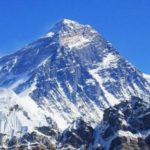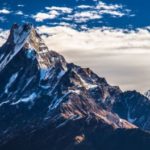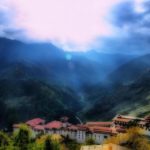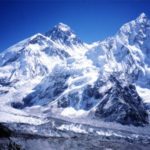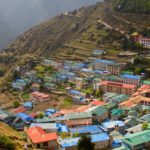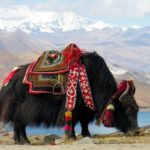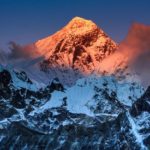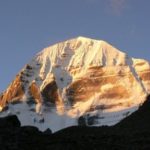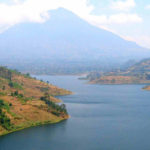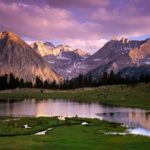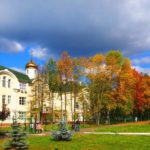Sherpas – Historical Structure
 The word sherpa in Nepal means – a person from the east. They call themselves sharkkhombo. The east in this case is eastern Tibet, from where the Sherpas once came to settle in the Himalayas at the foot of the eight-thousanders – Everest, Lhotse, Cho-Oyu and Makalu.
The word sherpa in Nepal means – a person from the east. They call themselves sharkkhombo. The east in this case is eastern Tibet, from where the Sherpas once came to settle in the Himalayas at the foot of the eight-thousanders – Everest, Lhotse, Cho-Oyu and Makalu.
So the Nepalese Sherpas are essentially Tibetans, besides they are united by common “high mountain” genes, but their language differs significantly from other Tibetan languages.
Historical structure
Sherpa villages are located at such heights that may seem to us not adapted for life. Sherpas cultivate the land, growing potatoes, carrots and cabbage at a height of up to four and a half thousand meters, and build their houses and graze cattle, sometimes even at five thousand. In the places where they live, the use of the wheel is in principle impossible even if they invented it themselves, it would not be useful to them. True, they still have yaks that can be loaded, furry, rather meek and very intelligent – they almost do not leave manure on the road and always give it to a man, clinging to the dangerous steep edge of the path, but, firstly, it’s not any sherpa, secondly, yaks must be grazed and sheared, and not only used on parcels, and thirdly, the yak walks much slower than the sherpa, even loaded, and the shaky suspension bridges over the ravines for the yak are generally impassable. Therefore, the Sherpas themselves had to become a vehicle.
Large villages such as Namche Bazar, Khumjun and Pforzie are often surrounded by a stone wall about one and a half meters high. Sometimes the entrance to the village lies through a covered stone gate. Almost every plot of land is surrounded by walls inside the village, so if you get off the main road you can stray through the Sherpan village for quite some time. The main street is a path for pedestrians with “lanes” for left-hand traffic, separated by a mound of stones dotted with mantras. A monastery, a stupa and a stone with a mantra on it are sacred objects in the Himalayas, therefore it is customary to leave them on the right, going around clockwise, from here this walking left-hand movement occurs.
So the Sherpas lived 200 years ago, and perhaps their life would continue in their own way in agricultural labor, grazing yaks and constantly dragging household goods up and down if it were not for the strangers’ passion for the Himalayas. This happened about a hundred years ago, when the British began their first ascents in the Himalayas. They had a lot of cargo with which it was necessary to go uphill. Sherpa took upon himself the burden of a stranger, and he opened a great world for him and gave meaning to his walking in the mountains.
The centuries-old way of life has been prepared by Sherpas – endurance, hard work, willingness to take risks and the absence of fear of heights are the best suited for climbing mountains. The Buddhist worldview with its tolerance, friendliness and faith in the transmigration of souls also played its role.
Today is a typical Sherpa day – this is an early rise. A 10-hour journey with freight up and down the mountain trail, and around five in the evening, when it begins to get dark, rest in the inn at the stove, where you can eat and bask, the Sherpa’s life routine has been repeating from day to day at twelve to fourteen. The next career step is the transition from the category of porters to the category of guides. In fact, this means a significant relief of the burden, receiving not 7, but 10-15 dollars a day, talking with foreigners and, in the future, climbing to some peak not as a porter, but as a full member of a group of climbers.
The classic alignment of roles in a modern Sherpa family is this: the father works as a guide, and the mother runs the household – cooks, cleans, holds a small kiosk with drinks and chips in a house that at the same time serves as an inn for tourists. This is basically the way of life of the inhabitants of Solokkhumbu, and in the capital Namche Bazar you can find sherpas who can afford to fly on vacation to the Cote d’Azur. By the way, in fact, Solo and Khumbu are two different areas, which, however, have long been intertwined into one concept.
Solo is located below, it is a region of rhododendron forests, green pastures and gorges at an altitude of two to three and a half thousand meters. Khumbu took its name from the name of a glacier sliding down from Everest, it is mean for greens and rich in snowy peaks highlands.

